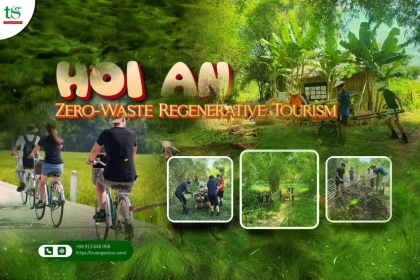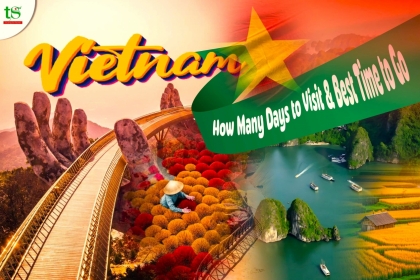The luxurious tomb of the 12th emperor of the Nguyen dynasty situated on a mountain peak in a central province, stands out with its beautiful
The luxurious tomb of the 12th emperor of the Nguyen dynasty situated on a mountain peak in a central province, stands out with its beautiful ‘nine dragons lurking in clouds’ mural.
With its unique architecture, this place attracts many visitors every year who come to explore and discover it.
Ung Lang or Khai Dinh Tomb is the final resting place of King Khai Dinh - the 12th emperor of the Nguyen dynasty. The tomb is located on Chau Chu mountain (also called Chau E), about 10km from the center of Hue city. With its unique design and sophisticated porcelain inlay techniques, it brings an extremely impressive beauty, attracting many visitors to visit and explore every year.
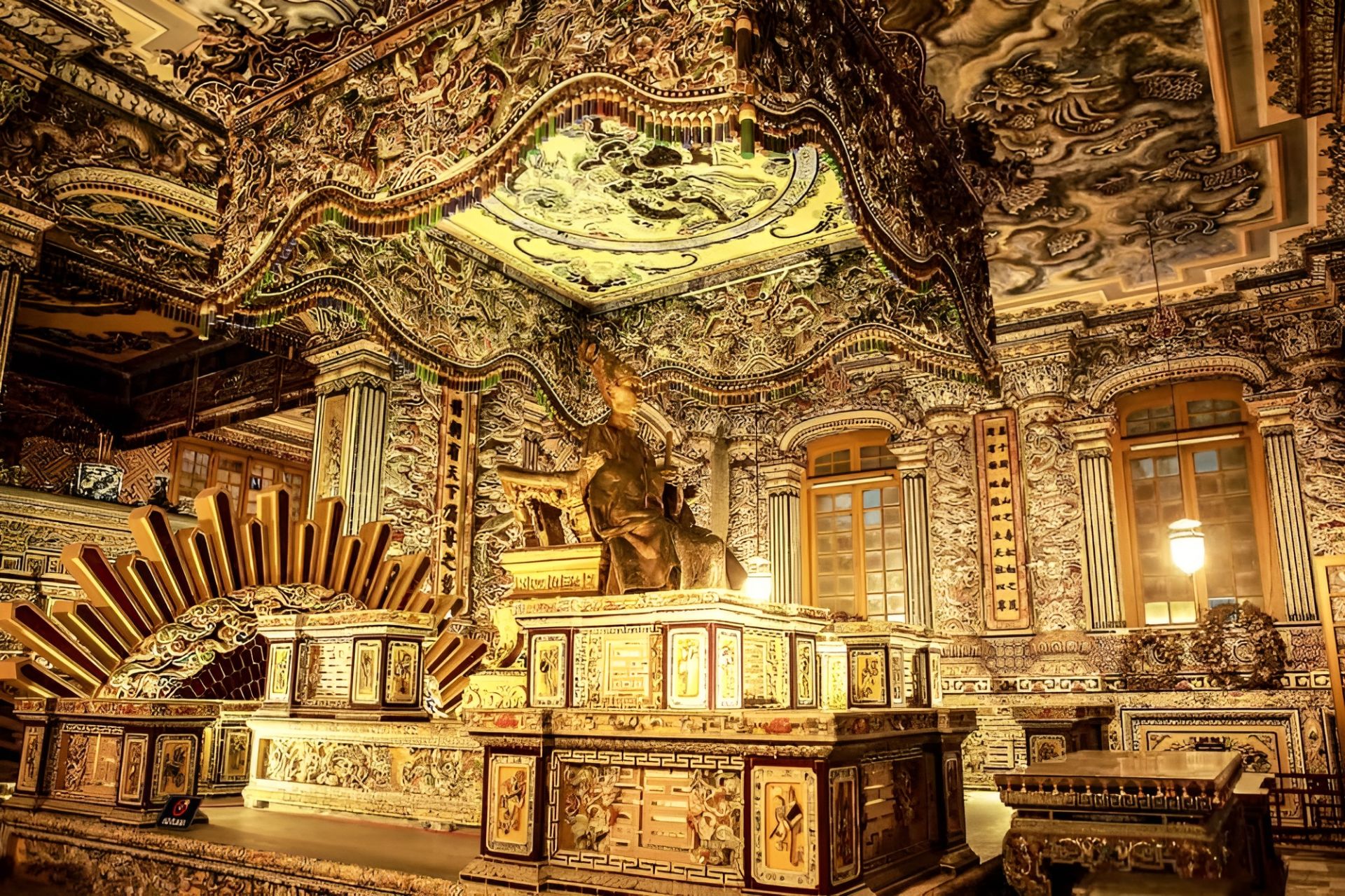
Construction History
King Khai Dinh (1885 - 1925) born Nguyen Phuc Buu Dao, was born in Hue citadel in the year of Chicken in Lunar calendar. Khai Dinh ascended the throne in 1916, as the 12th king of the Nguyen dynasty, with the reign name Phuc Tuan. During his reign, Khai Dinh built many massive structures. Among them, Khai Dinh Tomb in Hue stands out from all the other royal tombs that this Nguyen king had constructed.
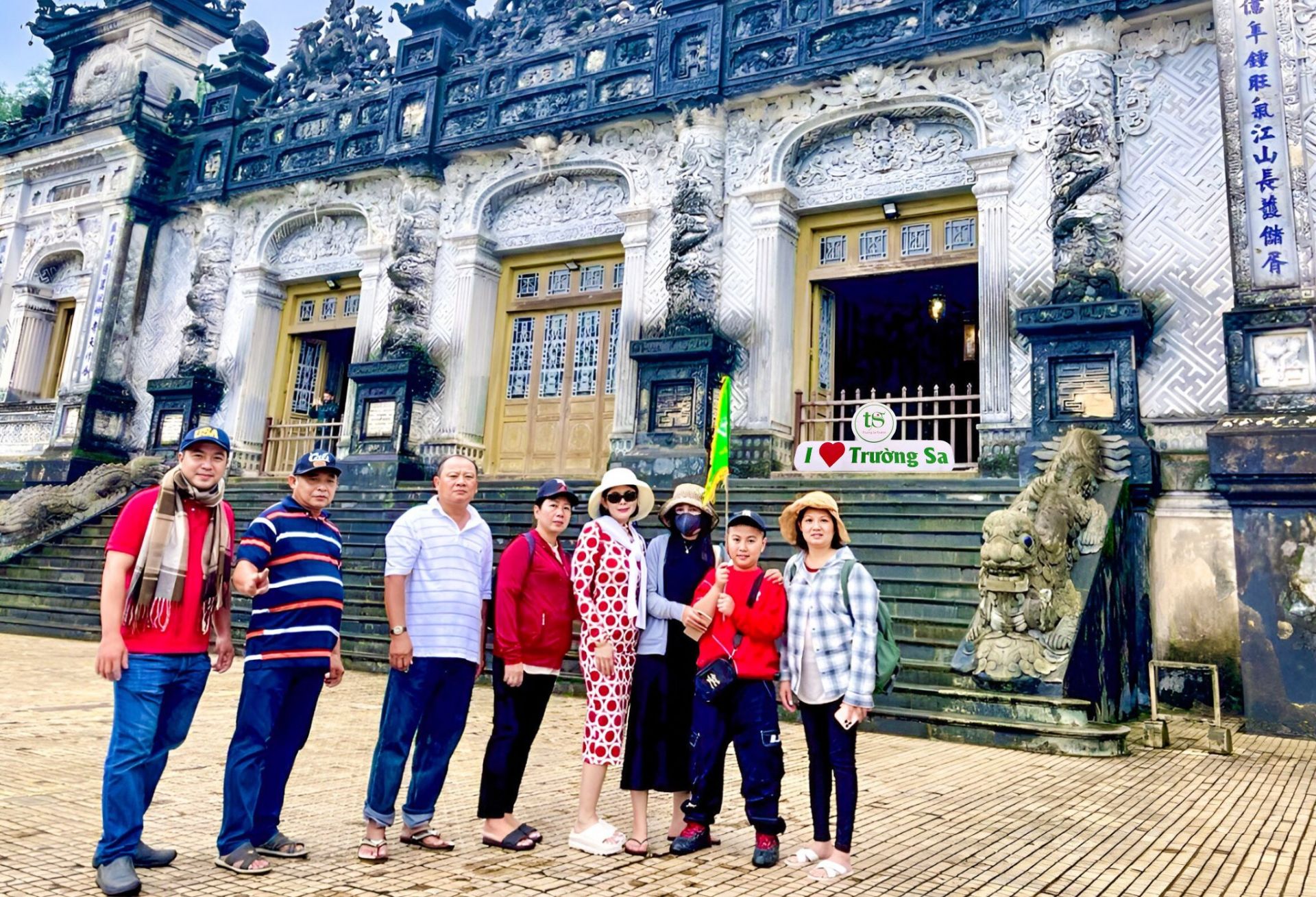
Specifically, since succeeding his father King Dong Khanh to the throne, Khai Dinh had thought about building his own tomb for after death. He invited feng shui masters to calculate and consult their reports to choose the best location for the tomb. After much deliberation, King Khai Dinh chose the foothills of Chau Chu as the feng shui site to build his tomb.
Khai Dinh Tomb broke ground in September 1920 located on the foothills of Chau Chu mountain (also known as Chau E), Thuy Bang commune, Huong Thuy town, former imperial capital Hue. This is quite a peaceful area, with spacious scenery, surrounded by many attractive tourist sites that often attract many visitors such as Thuy Tien Lake, Thien An Hill, Quan Am Goddess spiritual area, etc. The construction of Khai Dinh Tomb lasted 11 years, only completed in 1931 (Tan Mui). Apart from the main person in charge, Khai Dinh Tomb attained its present looks thanks to the skillful hands of many famous artisans and craftsmen across the country. To this day, Khai Dinh Tomb in Hue remains one of the rare places preserving many historical, cultural and artistic values, evidencing the prominent cultural exchange between Vietnam and Western countries of the past.
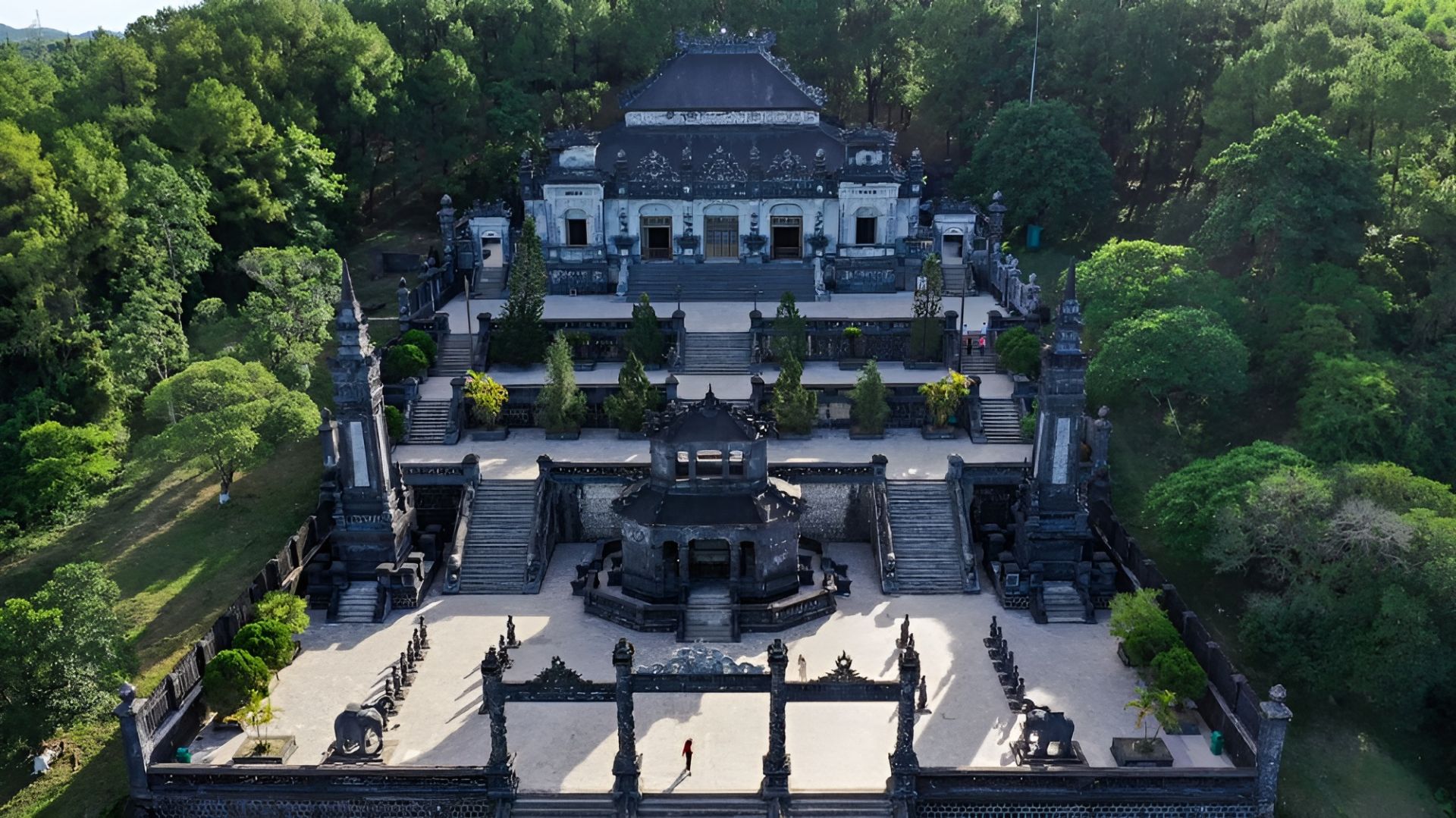
Unique Architecture
Khai Dinh Tomb along with many other relic complexes in the former imperial capital Hue were recognized by UNESCO as World Cultural Heritage Site. Standing out with its unique architecture and meticulous details that no images could recreate, visitors have to come and behold with their own eyes to truly appreciate the extremely exceptional and novel overall design, rarely seen in other Nguyen dynastic tombs.
Overall, King Khai Dinh Tomb was built as a protruding rectangular block, situated on top of 127 stairs. The main materials used to construct this structure were cement, iron, steel, various types of porcelain and glass imported from Japan, China, and even some roof tiles ordered from France. These factors contributed to the novelty and exclusivity of King Khai Dinh Tomb as well as the luxurious lifestyle of King Khai Dinh in the past.
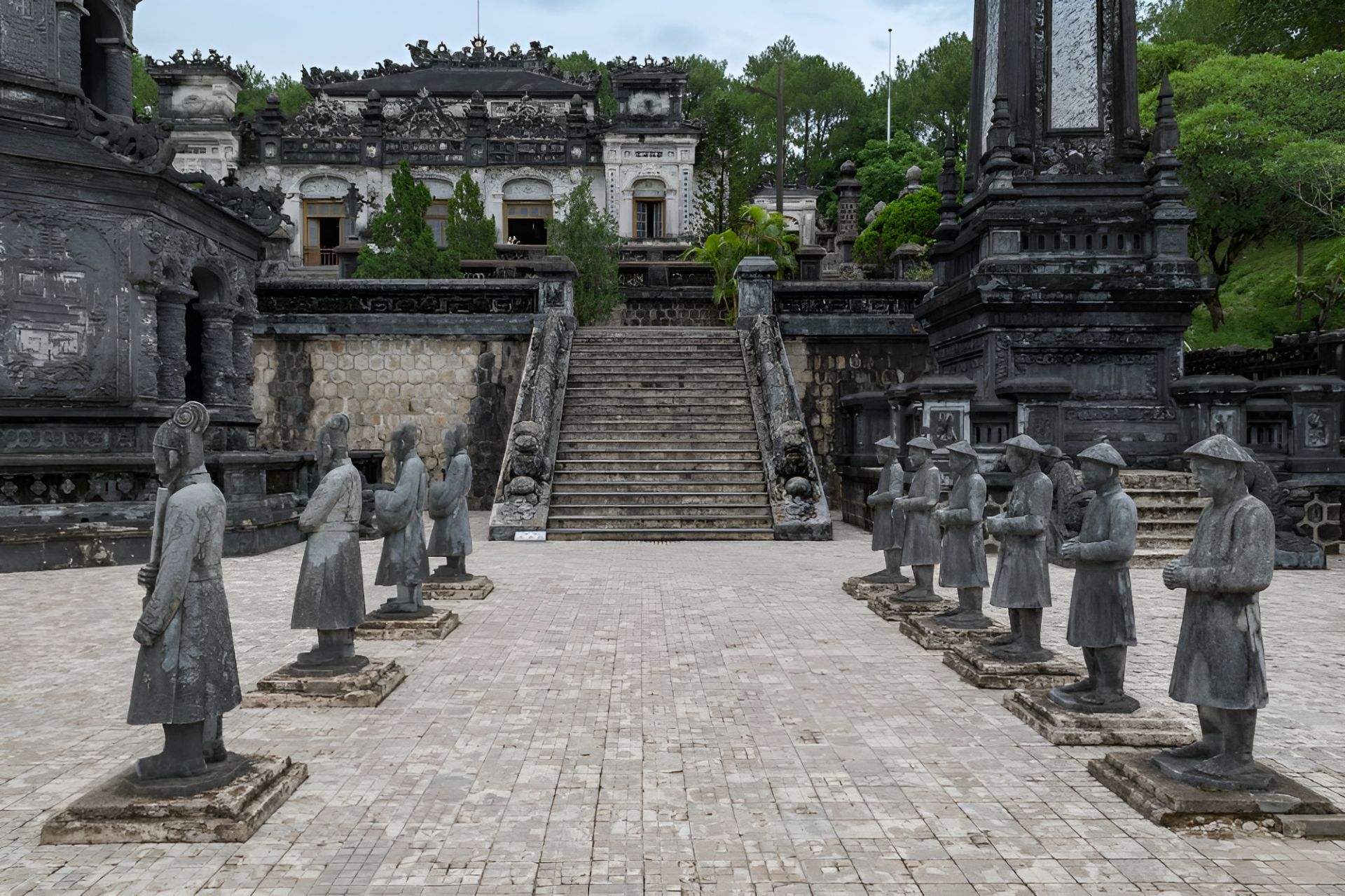
One thing Ung Lang has in common with other Nguyen dynasty royal tombs is the system of mandarin, military, servant and horse-elephant statues standing in the courtyard beneath the royal tomb sanctuary.
The sanctuary dedicated to King Khai Dinh situated inside Thien Dinh Palace at Ung Lang was lavishly arranged with vibrant and pleasing decorative motifs. The ancestral worship artifacts were also made from precious materials and meticulously crafted.
Thien Dinh Palace was perhaps the place that attracted visitors the most at Ung Lang. Because this was the most important and tallest structure within Ung Lang. In front of Thien Dinh Palace lies Khai Thanh Hall – where the altar and portrait of King Khai Dinh are placed. At the center is Buu Altar where the statue of King Khai Dinh stands. This statue was commissioned by the king himself to French sculptor Paul Ducuing, who sculpted and cast it at Ferdinand Barbédienne’s workshop in Paris. The gold bronze statue depicts the king sitting on his throne, dressed in dragon robes and wearing the nine-dragon crown.
Another highlight of Ung Lang is the ‘nine dragons lurking in clouds’ mural painted on the ceiling of the three central bays in Thien Dinh Palace within Ung Lang. This 'Nine Dragons Playing with Clouds' painting is also considered one of the largest dragon paintings in Vietnam today.
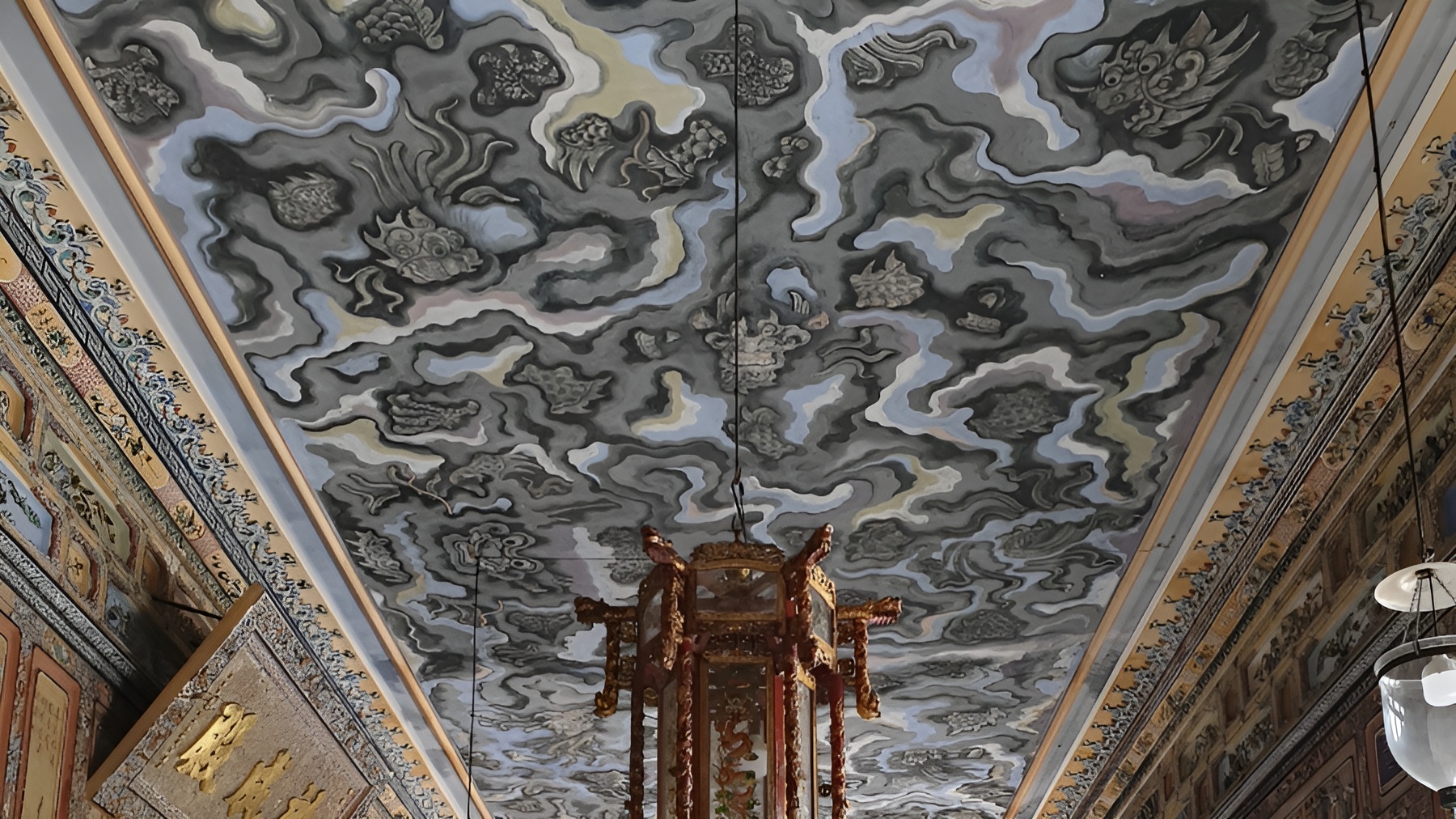
According to documents, this painting was done by court artisan Nguyen Van Thanh. A unique trait of this painting is that after nearly a century, the mural has never been retouched and still looks new. Another mystery is that the painting has never been recorded as catching cobwebs despite the surrounding area of Thien Dinh Palace being quite cobwebbed.
Khai Dinh Tomb is an iconic ancient architectural work, harmoniously blending many cultural backgrounds, materials and designs, offering visitors an extremely attractive and interesting attraction in Hue.
-
 Sapa Itinerary from Hanoi: A 48-Hour Travel Guide to Explore Sapa
Sapa Itinerary from Hanoi: A 48-Hour Travel Guide to Explore Sapa
-
 Top Must-Try Experiences in Hoi An – Join the Zero-Waste Regenerative Tourism Model
Top Must-Try Experiences in Hoi An – Join the Zero-Waste Regenerative Tourism Model
-
 How Many Days in Vietnam & Best Time to Visit – Complete Travel Guide
How Many Days in Vietnam & Best Time to Visit – Complete Travel Guide
-
 Vietnam Travel Tips: 12 Must-Do Experiences and 7 Mistakes to Avoid
Vietnam Travel Tips: 12 Must-Do Experiences and 7 Mistakes to Avoid
-
 Is Ba Na Hills Da Nang too crowded? Full tips for an unforgettable experience in 2025
Is Ba Na Hills Da Nang too crowded? Full tips for an unforgettable experience in 2025






 info@truongsatourist.net
info@truongsatourist.net
